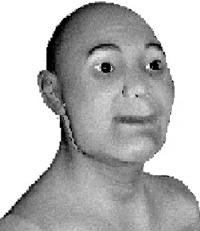Peñon Woman III
Dieser Beitrag ist noch in Arbeit!
(red)
The skull and other parts of a skeleton now named Penon Woman III were discovered in 1959 on what in pleistocene days had been a lake bed. Penon Woman may have drowned since there was no sign of a of formal burial. No tools have been found associated with her remains. Penon woman is estimated to have been around 27 years old when she died.
Her remains were not not immediately recognized for what they were. They remained on the shelves of the Mexican National Museum of Anthropology until 2001 when Mexican-British scientist, Dr. Silvia Gonzalez received permission to take them to her laboratory at Oxford, England, to be carbon dated. The remains turned out to be 12,700 to 15,000 years old and as such rank among the oldest human remains found in the Americas so far. At that time the climate in Mexico was much cooler and wtter than it is today.
Dr. Gonzalez has, since 2001, announced the forthcoming publication of DNA analyses of the skull which she hinted would be a "bomb". Unfortunately, the bomb seems to have a problem with its fuse since nothing has been published by early 2007.
Her skulls is dolichocephalic (long and narrow in form) and thus different from the generally brachycephalic skull forms (short and broad) of modern Amerind populations.
Without benefit of a DNA analysis, the next best method to etsablish possible relationships is the skull form. This does put the Penon Woman close to the Pericu People of the Mexican Pacific coast. They in turn are thought to be genetically related (based again on their skull measurements) in the Americas to the Fuegians, the Parana (Argentina) and ancient populations of Brazil (e.g. "Luzia"). Outside the Americas they seem to be most closely related to the Australians, Tasmanians, Andamanese and the Tolai people of Papua-New Guinea.
Reconstruction of how the Penon Woman may well have looked on the basis of her skull. The skin colour cannot be reconstructed and may have been anything from the deepest black to brown and even an unlikely pink. For more on skin colours of human races, ancient and recent, see Chapter 34 "What does related mean?", subchapter 6. Hair form and style pf Penon woman of course, also remain quite unknown.
Without benefit of a DNA analysis, the next best method to establish possible relationships is the skull form. This does put the Penon Woman close to the Pericu People of the Mexican Pacific coast. They in turn are thought to be genetically related (based again on their skull measurements) in the Americas to the Fuegians, the Parana (Argentina) and ancient populations of Brazil (e.g. "Luzia"). Outside the Americas they seem to be most closely related to the Australians, Tasmanians, Andamanese and the Tolai people of Papua-New Guinea.
Anmerkungen und Quellen
Quelle: George Weber, Gerorge Weber´s Lonely Islands - The Negrito People and the Out-of-Africa Story of the human race, unter: 54. Possible Relatives in the Americas - Penon Woman (Distrito Federal, Mexico)
Bild-Quellen
(1) George Weber, Gerorge Weber´s Lonely Islands - The Negrito People and the Out-of-Africa Story of the human race, unter: 54. Possible Relatives in the Americas - Penon Woman (Distrito Federal, Mexico)
(2) Mexico´s National Museum of Anthropology, nach: CNN.com / SCIENCE & SPACE, unter: http://archives.cnn.com/2002/TECH/science/12/03/oldest.skull/index.html

